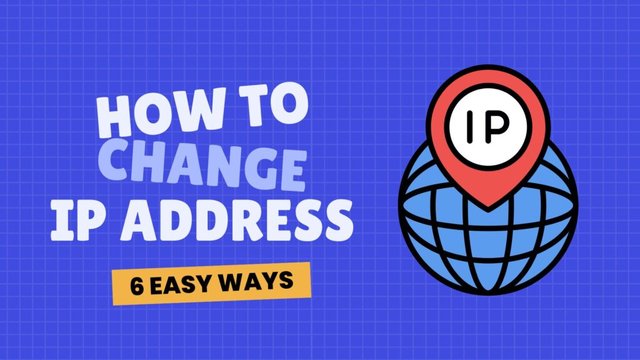How to Switch Your IP Address on Any Devices for Better Privacy and Access
In today’s digital age, protecting your online identity is just as important as protecting your personal belongings. Every time you connect to the internet, your device is assigned an IP address, a unique number that reveals your approximate location and online activity. That’s why learning how to switch your IP address on any devices has become essential for privacy, security, and unrestricted access to content.
If you’re ready to safeguard your browsing experience, control your digital footprint, and unlock restricted websites, let’s see details on how this process works and why it matters.
What Does It Mean to Switch Your IP Address?
Your IP (Internet Protocol) address acts as your digital identity card. It allows websites, streaming platforms, and online services to know where you are connecting from. When you switch your IP address on any devices, you essentially change that virtual identity, making it appear as though you are connecting from a different country or network.
This process has several benefits:
- Enhances online privacy by hiding your real location
- Bypasses geo-restricted content like streaming services or censored sites
- Improves security on public Wi-Fi networks
- Prevents tracking from advertisers and third-party data collectors
How to Switch Your IP Address on Any Devices (Step-by-Step)
Whether you’re using a laptop, smartphone, or tablet, the process to switch your IP address on any devices is surprisingly simple. Here are a few trusted methods:
1. Using a VPN (Virtual Private Network)
A VPN is the easiest and most secure way to change your IP. When you connect to a VPN, your internet traffic is routed through an encrypted tunnel to a remote server. That server assigns you a new IP address, masking your real one.
Benefits of using a VPN:
- Encrypts your internet data
- Protects you on public Wi-Fi
- Allows access to blocked sites and streaming content
- Works on Windows, macOS, Android, and iOS
2. Manually Resetting Your IP
You can also manually change your IP without extra tools. For example, on Windows:
- Open Command Prompt and type ipconfig /release then ipconfig /renew.
- This requests a new IP address from your ISP.
3. Using a Proxy Server
A proxy acts as an intermediary between your device and the internet. When you connect via a proxy, your requests go through the proxy server, which uses its own IP to fetch data.
Proxies are lightweight and often free, but they lack encryption. If privacy is your main concern, VPNs are the better option.
Why You Should Switch Your IP Address Regularly
Changing your IP is more than just about unblocking Netflix or accessing a different region’s content. It’s about digital freedom and online protection.
Here are a few reasons you should regularly switch your IP address on any devices:
- Avoid digital tracking: Advertisers and analytics platforms use your IP to build data profiles. Changing it helps reduce personalized tracking.
- Prevent targeted cyberattacks: A new IP address can help reduce exposure to hackers or malicious bots.
- Maintain anonymity: Whether researching sensitive topics or browsing privately, a new IP gives you control over your privacy.
- Access global content: From local TV shows to exclusive game servers, you can appear anywhere in the world with one click.
Which Method Is Best for You?
If your goal is to protect your identity and browse freely, VPNs are the most reliable solution. They combine encryption, IP masking, and unrestricted access in one tool.
Manual or proxy methods work for temporary IP changes, but they don’t guarantee privacy or security.
To see details on the best VPNs and step-by-step instructions for beginners, visit SafePaper.io’s IP address guide.
Final Thoughts
In a world where online privacy is constantly under threat, learning to switch your IP address on any devices is no longer optional — it’s essential. Whether you’re protecting your personal data, avoiding tracking, or accessing restricted content, this simple action gives you the power to control your online presence.
Before you make any changes, remember that not all methods are equally secure. Take the time to see details on expert-reviewed tools and strategies available at SafePaper.io to make informed decisions for your digital safety.
